Our Community
George’s story
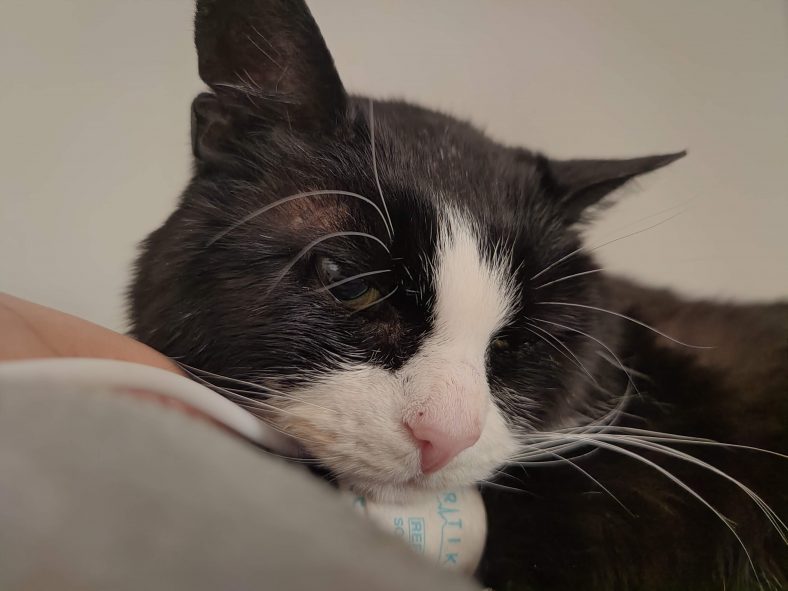
11-year-old George was referred to our Neurology team after his carers noticed a sudden change in the way he was behaving: he was circling, pacing, and it seemed he was unable to see.
Our Neurologist, Chris, observed that George was not very alert during his initial examination; he was disorientated, compulsively pacing and his head was pointing distinctly to the left.
Our Diagnostic Imaging team performed an MRI on George’s brain. MRI (Magnetic Resonance Imaging) is a non-invasive imaging technique that allows us to produce detailed images of different parts of the body.
The MRI revealed a well-defined brain mass about the size of a 1p coin. This would explain George’s change in behaviour because as the mass developed, it would have pressed more and more on George’s brain, causing a midline shift.
A midline shift occurs when intracranial pressure (caused by a mass, a buildup of blood/fluid or swelling) is powerful enough to push the whole brain off centre. This can be fatal.
The blue arrows in the below MRI images show the mass in George’s brain:
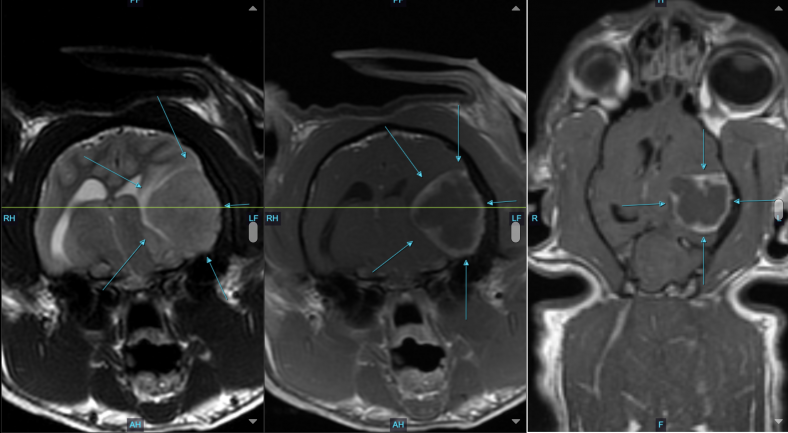
All things considered, Chris suspected that the mass was most likely a meningioma (a type of brain tumour).
We started medical management immediately with steroids and diuretics. George, unfortunately, continued to deteriorate, and so together with his carers, we decided to go ahead with surgical removal of the mass.
Chris was assisted by our Neurology Intern, Despoina, and a wonderful theatre and anaesthesia team to perform a craniectomy (an intricate brain surgery) on George. This involved creating a small window in George’s skull using a surgical drill, carefully scooping out the mass without affecting the surrounding tissue, and covering the new opening in George’s skull with titanium mesh (that way George could have a repeat MRI if necessary).
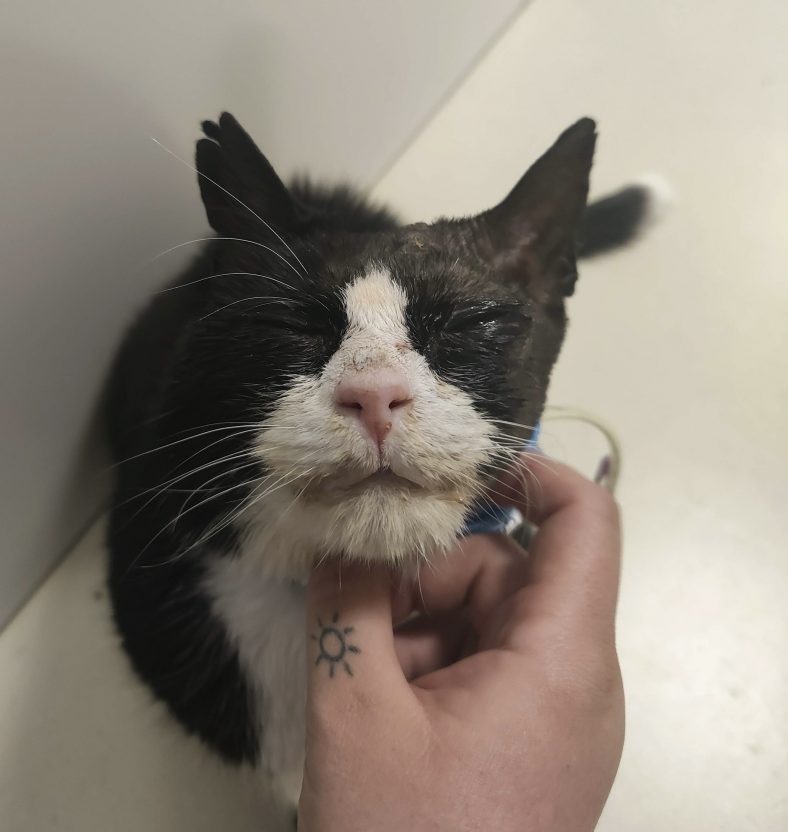
George getting some TLC from our Night Nurse, Mariah
George recovered very smoothly from his general anaesthesia in our Intensive Care Unit, and during the days of hospitalisation after surgery, he was already showing significant signs of improvement. He had stopped circling and pacing and showed no signs of visual impairment or abnormal behaviour! Amazing!
At his latest checkup, Sue, another of our Neurologists, says George was not showing any signs of abnormal behaviour. He seemed to be investigating the room in a purposeful manner and was a happy little cat.
We’ve heard George is doing very well at home, soaking up the mild sunshine and sneaking into his human parents’ bed!
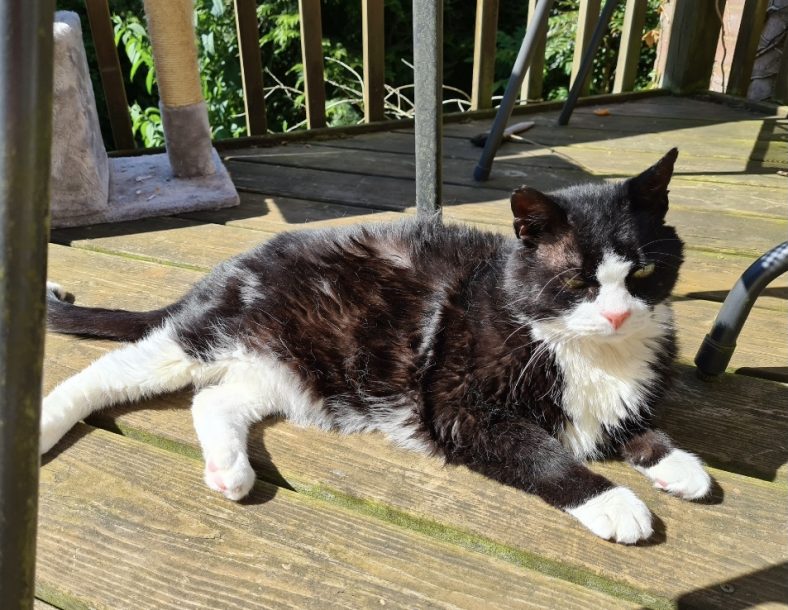
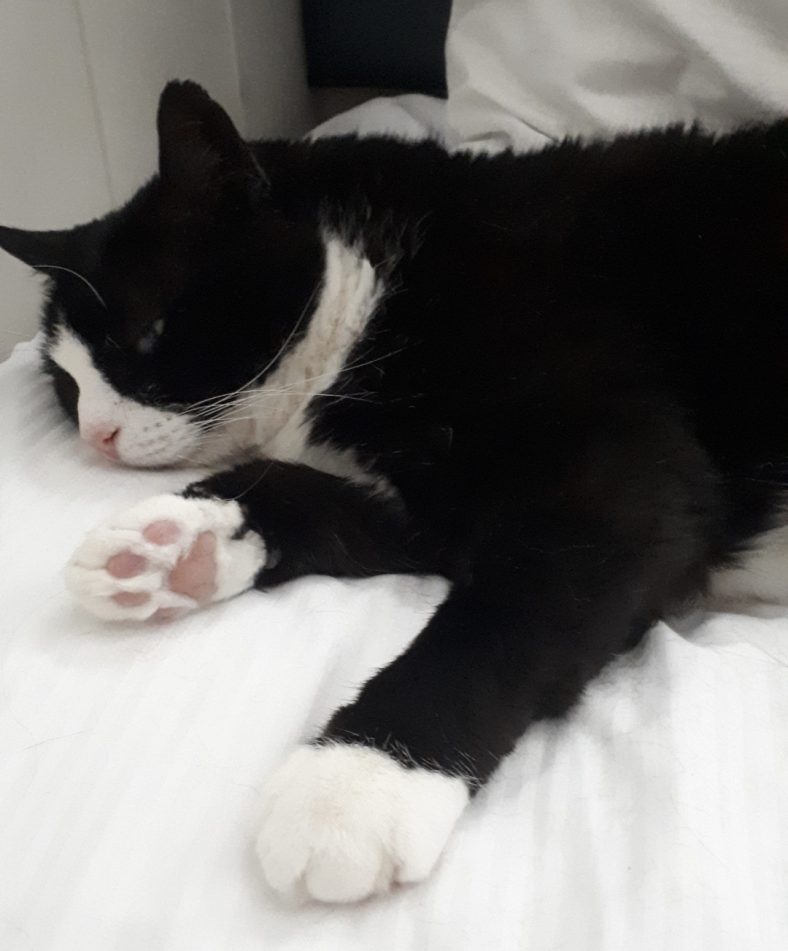
Thank you for reading this week’s blog, check out our Facebook, Instagram and LinkedIn for regular patient stories.
Take care,
Team Ralph

Amazing!! Most people would have put George to sleep I guess but staff at the Ralph are just so amazing and by helping George it will give them the experience to help other animals with similar conditions. Well done and I’m so pleased George is well and enjoying life again.
Thank you for the kind words, Mary. They are very much appreciated. We are all delighted by how George is doing at this time!